Microsoft Word is one of the oldest and most widely used applications on the Mac. Despite lots of competition, it remains a hugely popular word processor, thanks to the popularity of Microsoft’s Office suite among large business customers. If you use Word a lot, you’ll know that most of the time it works pretty well. But when things go wrong, it can be a significant problem. In this article, we’ll show you how to fix frozen Microsoft Word on Mac.
Why is Microsoft Word frozen on my Mac?
There are a number of possible reasons for Word freezing on your Mac:
- Lack of system resources. Word can be quite memory hungry, and so if your Mac is short on memory, perhaps because you have a lot of applications or browser tabs open, that could cause problems for Word.
- Corrupt settings files. Most applications, Word included, store preferences and settings in a file on your Mac. And they store cache in another file. If these files become corrupt, that can create problems like slow performance or freezes.
- You’re using an old version. If you regularly update macOS but haven’t updated Word for a while, it could be that the version of Word you’re using isn’t fully compatible with the version of macOS installed on your Mac.
- An AutoRecovery file is corrupt. When Word crashes or quits unexpectedly, it tries to save the currently open document. When it relaunches, it tries to open that document so you can continue working on it. If the AutoRecovery file is corrupt, that could cause Word to freeze.
- Faulty add-ins or macros. If you use extensions, known as add-ins, with Word, these may cause it to freeze. Similarly, if your Word documents rely on macros, these could cause it to run slowly or even freeze.
How to fix it if Word is frozen on your Mac
The very first thing to do is wait a few minutes. If Microsoft Word has not unfrozen, head over to the steps below.
1. Free up RAM
We recommend quitting other apps and freeing up memory first. This way, if Microsoft Word froze because there was not enough RAM, it may unfreeze, and so you won’t lose unsaved progress. There are two ways to do it.
The first one is easy, automatic memory release. All you have to do is check out the Menu App in CleanMyMac. It lets you monitor what’s going on in the background and control resource consumption. Here’s how it works.
- Install CleanMyMac — get your free trial here.
- Now, click a little iMac icon in the menu bar.
- Click Memory and check top consumers.
- Quit those you do not use (do not quit Microsoft Word just now).
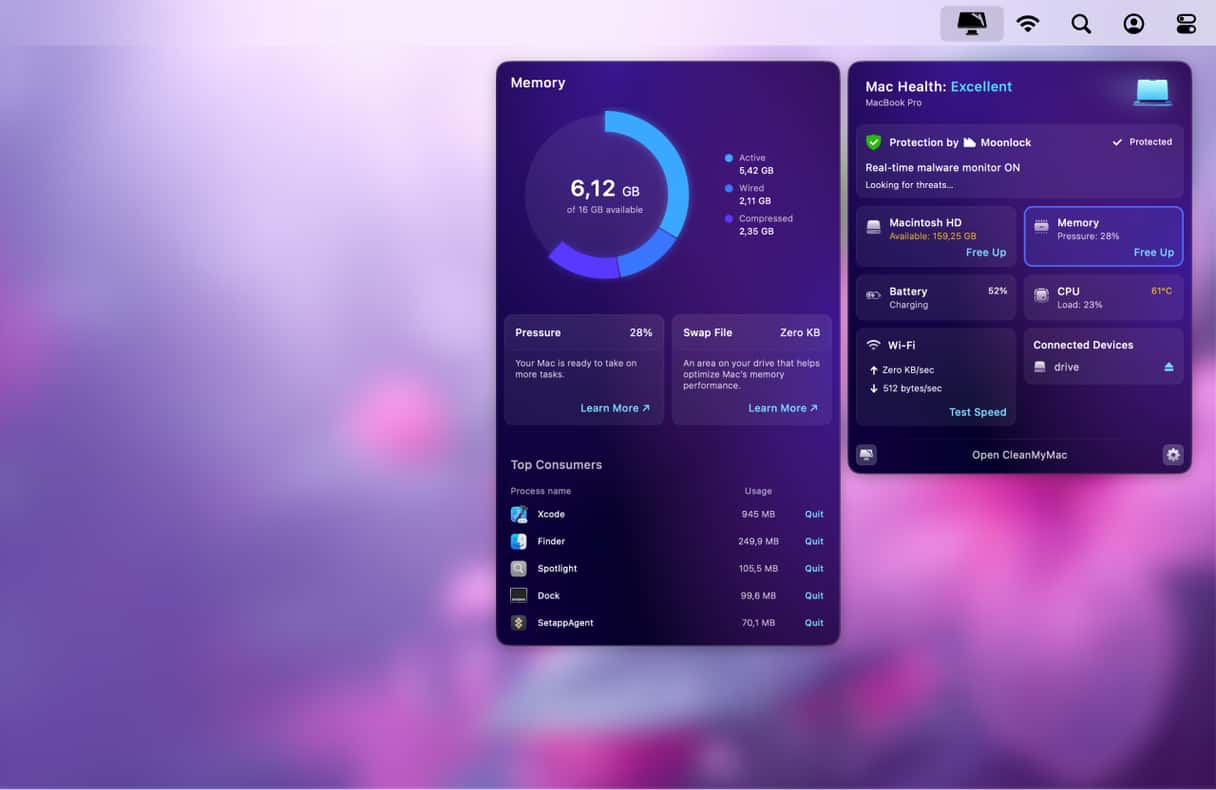
You can repeat the same for CPU to have more resources back. If you want to do it manually, you can use Activity Monitor.
If it hasn’t helped, jump to the next steps.
2. Force quit Microsoft Word
The next thing to do if Word is frozen is to force quit it and relaunch it to check if it freezes again. To Force Quit, there are three options:
- Click the Apple menu, choose Force Quit, select Word, and click Force Quit.
- Press Command+Option+Escape, select Word, and click Force Quit.
- Right-click Word in the Dock and choose Force Quit.
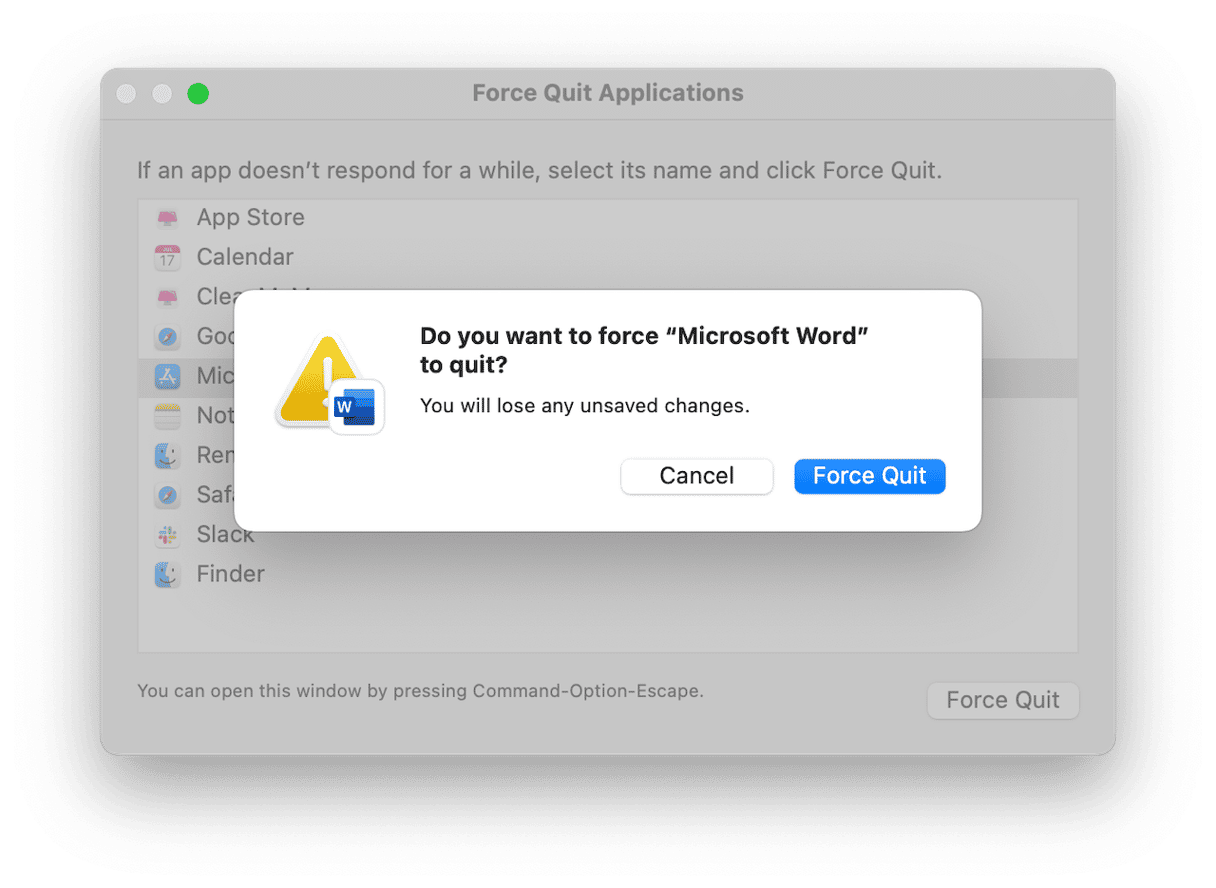
3. Update Word
The method for updating Word depends on whether you downloaded it from the App Store or from Microsoft. If it’s the former, check for updates in the App Store Updates section. If it’s the latter, click the Help menu in Word and choose Check for Updates. If there is one available, install it.
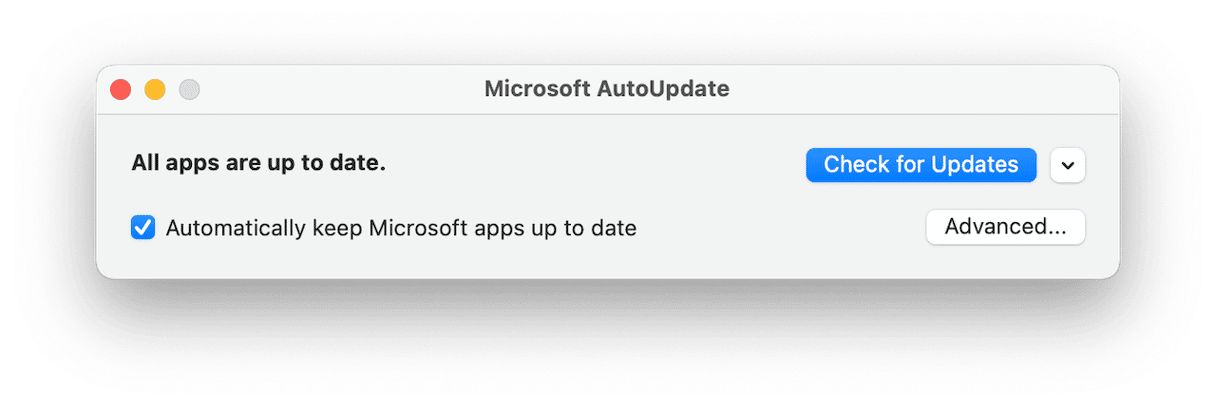
4. Update macOS
Go to Apple menu > System Settings > General and choose Software Update. Wait for your Mac to check for updates. If there is one available, follow the onscreen instructions to install it.
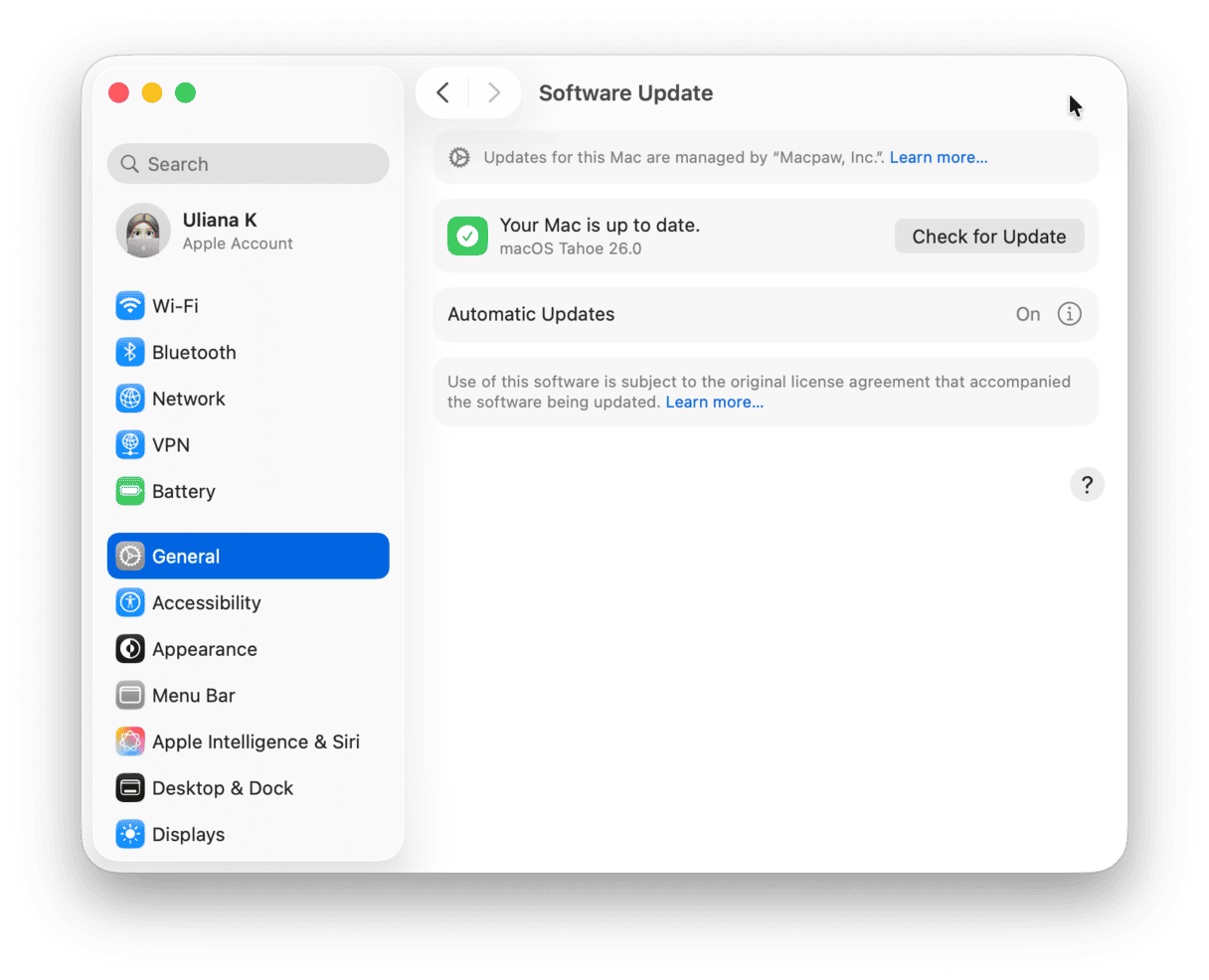
5. Remove AutoRecovery files
If Word still freezes when you try to use it, the next step is to get rid of AutoRecovery files in case they are the cause of the problem.
- Click the Finder icon in the Dock.
- Choose the Go menu > Go to Folder.
- In the text box, paste this path and press Return: ~/Library/Containers/com.microsoft.Word/Data/Library/Preferences/AutoRecovery
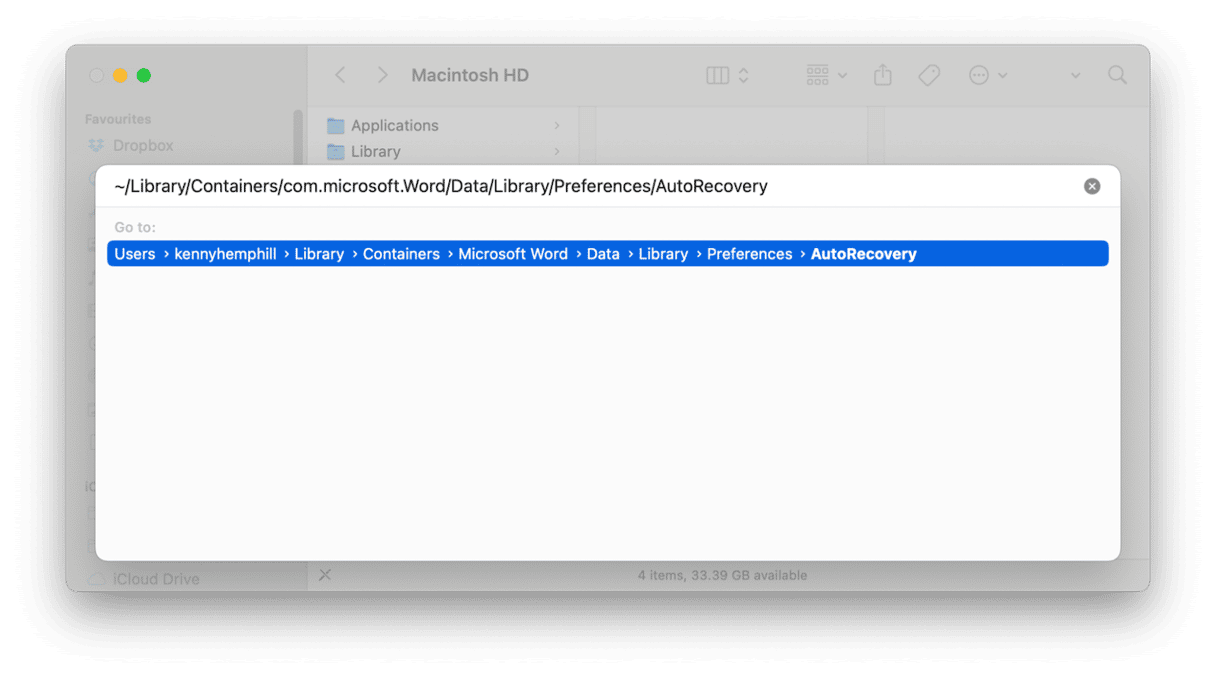
- Drag all the files from that folder to the Trash and empty the Trash.
Note: If you delete these files, you won’t be able to recover the unsaved progress. So, we suggest recovering work first and then deleting these files. To recover unsaved progress, find the AutoRecovery save of [name of your unsaved file] document in the abovementioned folder and copy it to the Desktop. Change the extension to .docx. You can now open it in Pages and proceed with deleting the files in the AutoRecovery folder.
6. Disable add-ins and macros
If Word is still freezing, the next step is to disable add-ins and macros.
- In Word, if you can, click the Tools menu and choose Slow and Disabled Add-ins. Select each of the add-ins one by one and select Disable. Restart Word.
- If it still freezes, go to Tools > Macros, select each macro, and choose Disable.
- If disabling macros or add-ins works, you can turn them back on again one at a time until you find the one that is causing the freeze.
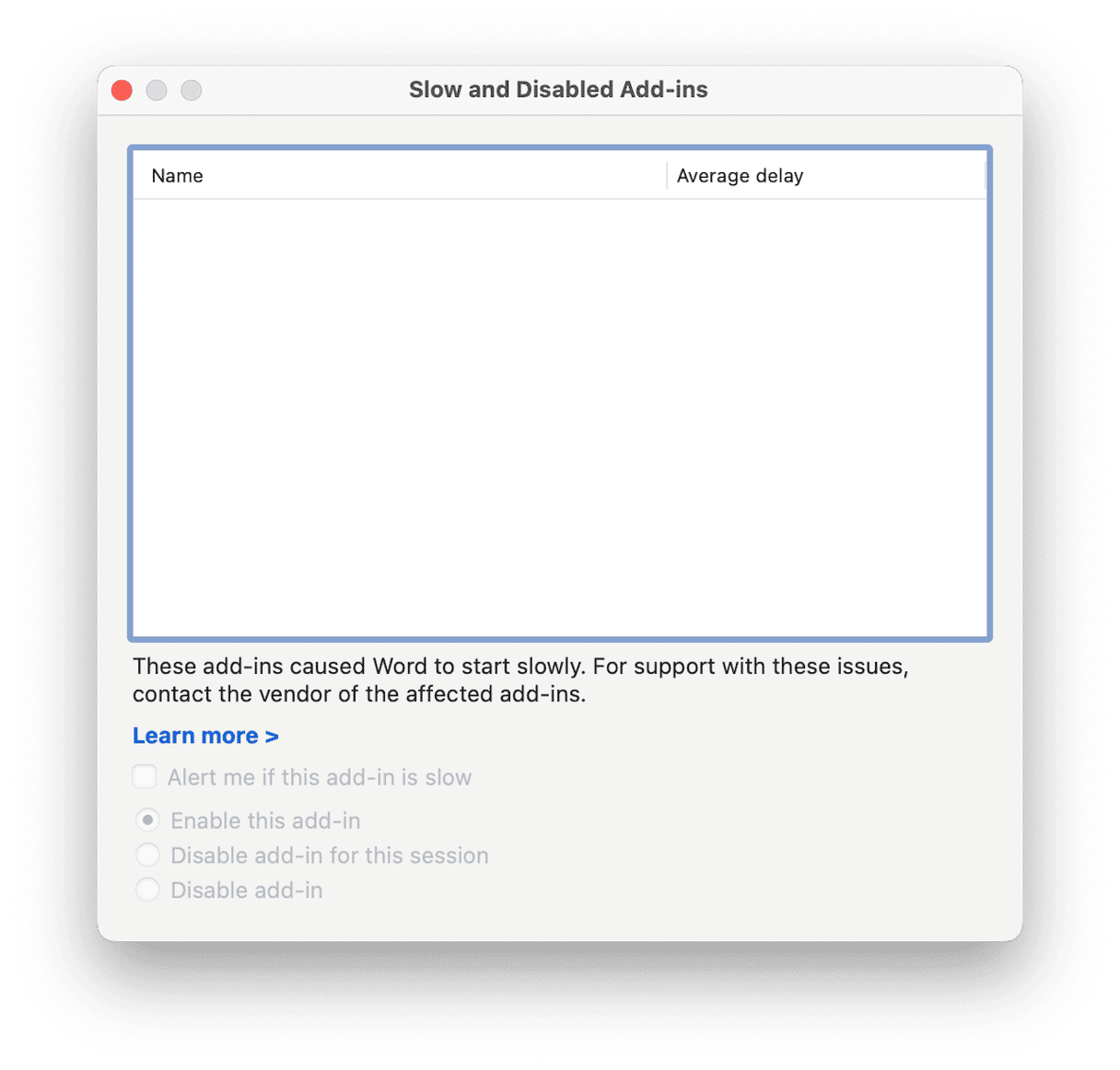
7. Reinstall Word
If nothing else works, the final step is to uninstall and then reinstall Word. But make sure you uninstall it completely. Just dragging the application binary to the Trash won’t do it. The easiest way to completely uninstall Word, or any other application, is to use the Uninstaller in CleanMyMac’s Applications feature. Just select Microsoft Word and click Uninstall. Now, go to the App Store or the official website and redownload it.
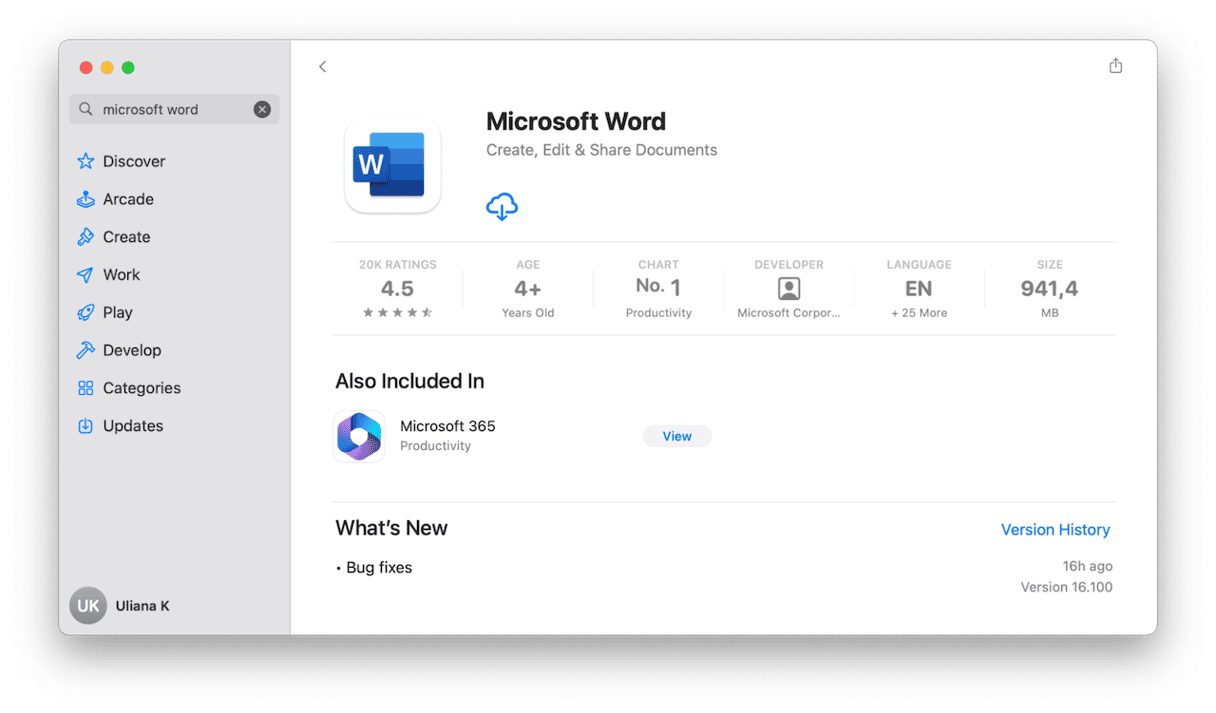
If Microsoft Word is frozen on your Mac, there could be a number of different causes. The trick to fixing it is to identify which possible cause is making it freezing on your Mac. Follow the steps above to do that and get Word working again on your Mac.









